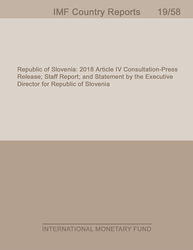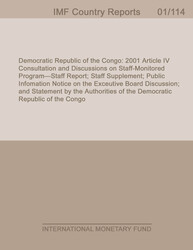
Ireland : Staff Report for the Third post-Program Monitoring Discussions
EXECUTIVE SUMMARY Ireland's economic recovery is expected to remain strong. Growth is increasingly driven by domestic demand as well as exports, and it is job rich, with employment rising 2.2 percent y/y in Q1, bringing the unemployment rate down to 9.8 percent in May. After surging by 4.8 percent in 2014, the economy is expected to expand by about 4 percent this year, aided by highly supportive financial conditions. Risks look broadly balanced. Unexpected developments in Greece remain the most prominent downside, although Ireland has limited direct exposure and its government cash position provides a sizable buffer. At the same time, risks of euro area stagnation appear to have been blunted by the ECB's quantitative easing and there are upsides to exports following euro depreciation. Domestic balance sheet legacies from the crisis remain a potential growth drag over the medium term, but domestic demand could also outpace baseline projections in an environment of prolonged low interest rates. Solid progress toward fiscal balance should be made while the economic environment is favorable. The deficit is likely to come in well below budget again in 2015. This welcome progress should be locked by avoiding any repeat of past spending overruns. The deficit reduction projected for 2016 is too modest considering Ireland's high public debt and strong growth, making it critical that revenue outperformance— which appears likely—be saved as the authorities intend. Medium-term spending pressures related to demographics and public investment indicate a need to build revenues and it is critical that any unwinding of savings in public sector wages be gradual. Tax reforms should be focused on areas most supportive of job creation and productivity while protecting progress achieved in base broadening. Mortgage resolution efforts should be intensified and disposing of state holdings in the three domestic banks would clear the public debt incurred in supporting them. Despite progress in restructuring distressed mortgages in recent years, arrears remain high and are increasingly prolonged. Continued close supervision of banks needs to be supported by increased utilization of the personal insolvency regime—where recent initiatives are welcome—and more efficient repossession proceedings. Improving bank health paired with supportive market conditions argue for early steps to prepare for significant further divestments of state shareholdings in banks. Lending interest rates must be sufficient to cover credit risks and enable banks to build capital to underpin new lending.
Publication date: June 2015
ISBN: 9781484391228
$18.00
Add to Cart by clicking price of the language and format you'd like to purchase
Available Languages and Formats
| English |
Prices in red indicate formats that are not yet available but are forthcoming.
Topics covered in this book
This title contains information about the following subjects.
Click on a subject if you would like to see other titles with the same subjects.
Money and Monetary Policy , International - Economics , Public Policy , monetary fund , bond , deficit , interest rates
Also of interest
Summary
Copyright © 2010 - 2025
Powered by:
AIDC



